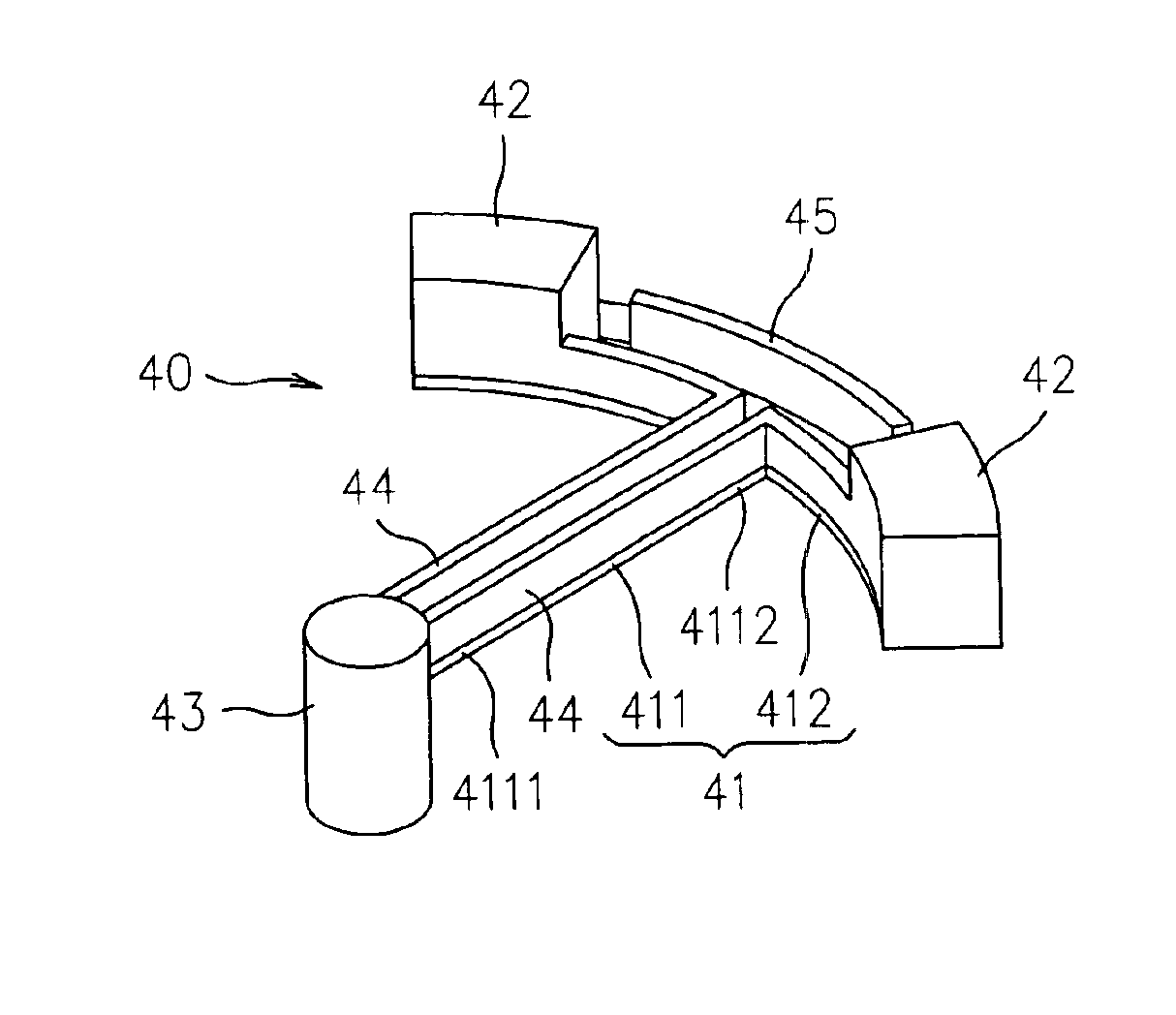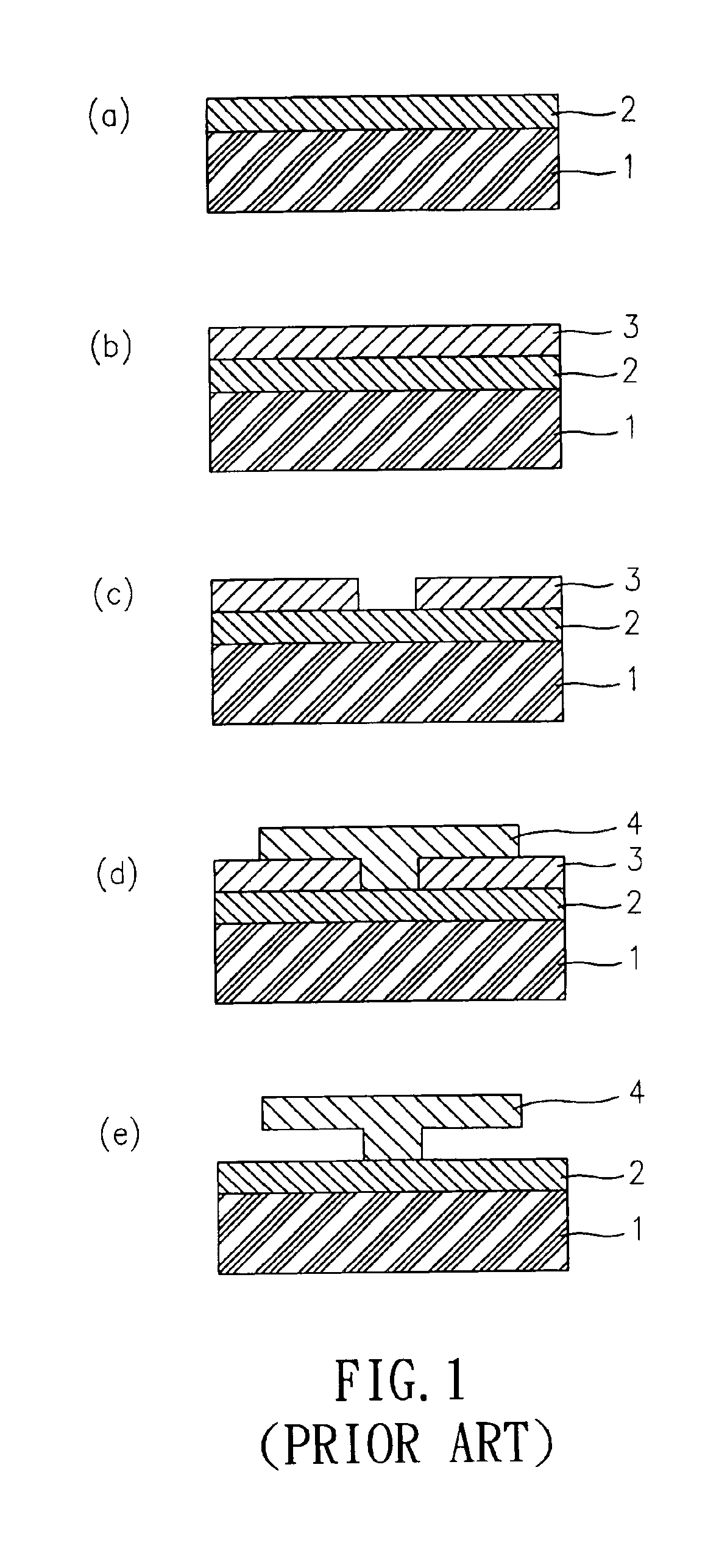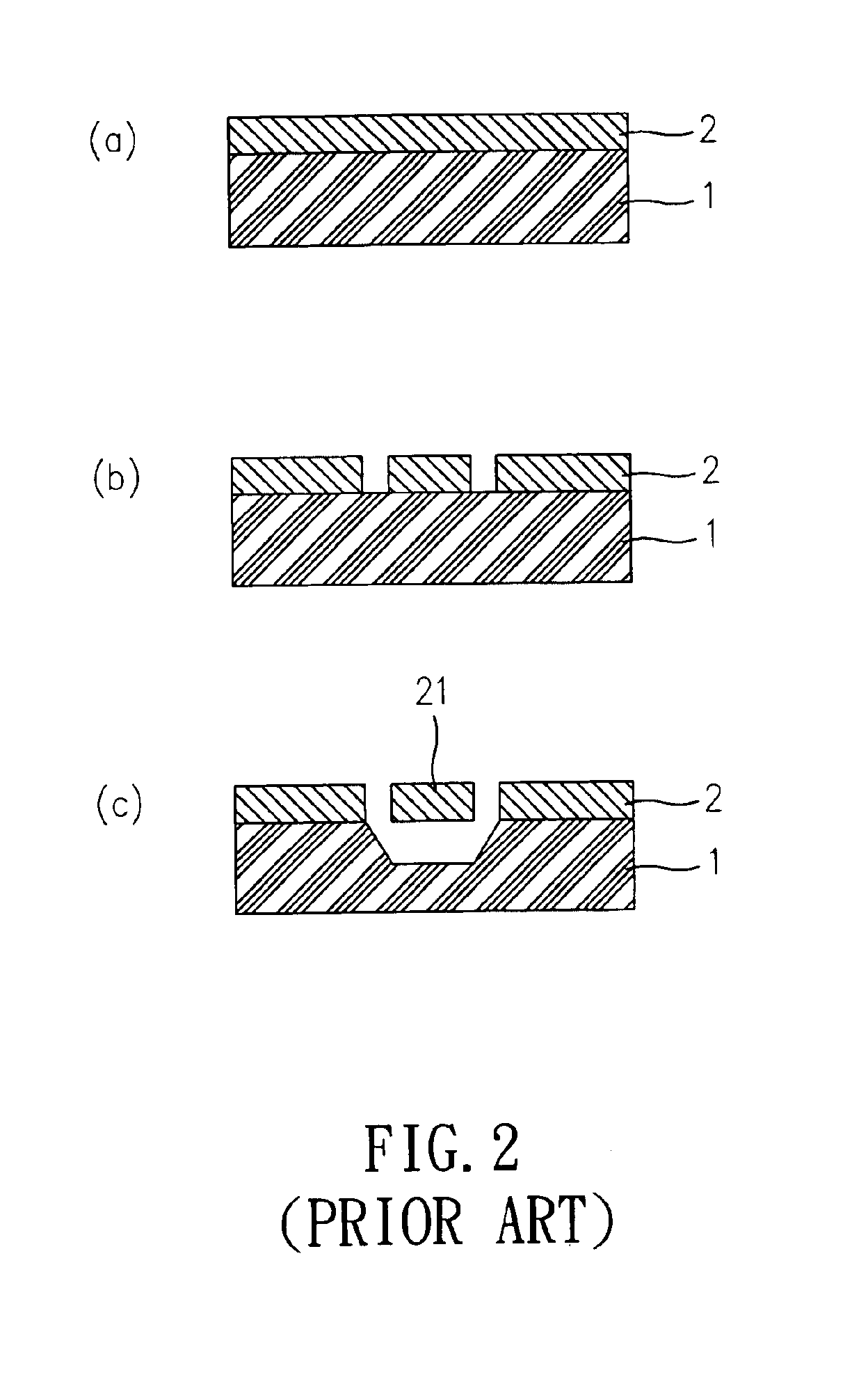Inertia sensor
a sensor and inertia technology, applied in the field of inertia sensors, can solve the problems of inaccuracy in crystal alignment, limitation of etching width, and arrangement of lateral electrodes, and achieve the effect of reducing the number of lateral electrodes
- Summary
- Abstract
- Description
- Claims
- Application Information
AI Technical Summary
Benefits of technology
Problems solved by technology
Method used
Image
Examples
Embodiment Construction
[0035]Please refer FIG. 5, which shows an embodiment for an inertia sensor according to the invention. The inertia sensor 30 is comprised of a suspension structure 31 and a micro-electroplating structure 32. The suspension structure 31 has an arm 311, one side 3111 of which is connected to a supporting piece 33, and another side 3112 of which is shown as suspending state and is extended horizontally to two sides to form a platform 312 by taking the arm 311 as center. A micro-electroplating structure 32 is respectively arranged at two sides on top of the platform 312.
[0036]Again, please refer to FIG. 6, which shows another embodiment for the inertia sensor. The inertia sensor 40 is comprised of a suspension structure 41 and a micro-electroplating structure 42. The suspension structure 41 has an arm 411, one side 4111 of which is connected to a supporting piece 43, and another side 4112 of which is shown as suspending state and is extended horizontally to two sides to form a platform ...
PUM
 Login to View More
Login to View More Abstract
Description
Claims
Application Information
 Login to View More
Login to View More - R&D
- Intellectual Property
- Life Sciences
- Materials
- Tech Scout
- Unparalleled Data Quality
- Higher Quality Content
- 60% Fewer Hallucinations
Browse by: Latest US Patents, China's latest patents, Technical Efficacy Thesaurus, Application Domain, Technology Topic, Popular Technical Reports.
© 2025 PatSnap. All rights reserved.Legal|Privacy policy|Modern Slavery Act Transparency Statement|Sitemap|About US| Contact US: help@patsnap.com



